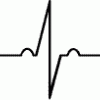it seems to absorb through the skin quite readily and to accumulate in the lungs, spleen, heart, and liver. perhaps rosemary in your homemade oat and coconut oil body-butter (i also add cocoa+shea butter, olive oil, and a touch of beeswax). process the oats and rosemary in a vitamix/blendtec, simmer in the oils, strain into jars (tempered!)
Percutaneous absorption of rosmarinic acid in the rat.
Ritschel WA1, Starzacher A, Sabouni A (1989)
Rosmarinic acid (RA) is a nonsteroidal anti-inflammatory agent. The purpose of the study was to investigate the transdermal absorption of RA, its tissue distribution and absolute bioavailability. In ex vivo experiments, permeation of RA across excised rat skin was about 8 times higher from alcoholic solution than from water, indicating that ethanol may act as sorption promoter. The flux from water or alcoholic solution was 4.4 or 10 micrograms/cm2/h, and the tleg was 7.8 or 3.7 h, respectively. After I.V. administration, RA is best described by a 2-compartment open model; t1/2 = 1.8 h, t1/2 alpha = 0.07 h, V tau = 2.3 L/kg, V beta = 15.3 L/kg. Upon topical administration of RA in form of a W/O ointment (25 mg/kg, 50 cm2), the absolute bioavailability was 60%. 0.5 hours after I.V. administration, RA was detected and measured in brain, heart, liver, lung, muscle, spleen and bone tissue, showing the highest concentration in lung tissue (13 times the blood concentration), followed by spleen, heart and liver tissue. 4.5 hours (peak time) after topical administration of about 3 mg on the hind leg over 20 cm2, RA was measured in blood, skin, muscle and bone tissue. The percutaneous route of administration seems to be a promising one for the therapeutic use of RA as nonsteroidal anti-inflammatory agent.
Edited by gamesguru, 07 July 2016 - 02:43 PM.
























































